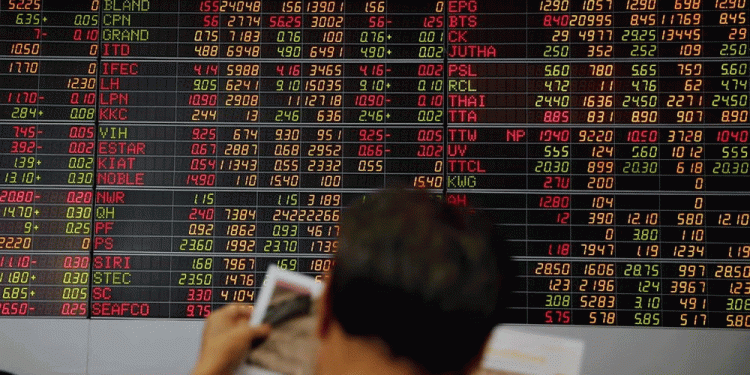By Lucia Mutikani
WASHINGTON (Reuters) – U.S. job growth slowed in November and monthly wages increased less than forecast, suggesting some moderation in economic activity that could support expectations of fewer interest rate increases from the Federal Reserve in 2019.
The slowdown in hiring reported by the Labor Department on Friday is likely the result of worker shortages. The Fed in its “Beige Book” report this week said most business contacts in its 12 districts said “that employment growth leaned to the slower side of a modest to moderate pace” because of labor shortages.
The labor market is considered near or at full employment.
Non-farm payrolls increased by 155,000 jobs last month, with construction companies hiring the fewest workers in eight months, likely because of unseasonably chilly temperatures.
“This is still a solid gain that suggests economic growth is gradually slowing back towards its potential pace,” said Paul Ashworth, chief economist at Capital Economics in Toronto. “There is nothing here to suggest the economy is suffering a more sudden downturn.”
The moderation in job gains in November also fits in with other data showing a rise in layoffs in recent weeks and a decline in a measure of services sector employment last month.
Data for September and October were revised to show 12,000 fewer jobs added than previously reported. Economists polled by Reuters had forecast payrolls increasing by 200,000 jobs in November. The unemployment rate was unchanged at near a 49-year low of 3.7 percent as 133,000 people entered the labor force.
Average hourly earnings rose six cents, or 0.2 percent in November. October wage gains were revised down to 0.1 percent from the previously reported 0.2 percent. In the 12 months through November, wages increased 3.1 percent, matching October’s jump, which was the biggest gain since April 2009.
Companies also reduced hours for workers. The average workweek fell to 34.4 hours from 34.5 hours in October.
The employment report comes on the heels of soft October data on the housing market, business spending on equipment as well as a jump in the trade deficit to a 10-year high that have heightened concerns over the economic expansion that is in its ninth year, the second longest on record.
Growth forecasts for the fourth quarter are around a 2.7 percent annualized rate. The economy grew at a 3.5 percent pace in the third quarter. Fears about the economy’s health were stoked by a steep sell-off on Wall Street and a partial inversion of the U.S. yield curve.
Following the employment report, U.S. financial markets continued to price in one rate hike from the Fed in 2019, compared with expectations for possibly two rate hikes a month earlier, according to CME Group’s FedWatch program.
The U.S. central bank is expected to increase borrowing costs on Dec. 18-19 for the fourth time this year.
The dollar was trading lower against a basket of currencies, while U.S. Treasury prices rose. U.S. stocks fell amid uncertainty whether a 90-day truce agreed by U.S. President Donald Trump and Chinese President Xi Jinping over the weekend would hold and lead to a lasting easing of trade tensions between the world’s two largest economies.
RATE HIKE PAUSE?
Fed Chairman Jerome Powell last month appeared to signal the central bank’s three-year tightening cycle was drawing to a close, saying its policy rate was now “just below” the range of policymakers’ estimates of a level that neither cools nor boosts a healthy economy.
Minutes of the Fed’s November policy meeting published last week showed nearly all officials agreed another rate increase was “likely to be warranted fairly soon,” but also opened debate on when to pause further hikes.
“The outlook for 2019 is uncertain in the face of the volatility in the financial markets and the weak inflation,” said Sung Won Sohn, chief economist at SS Economics in Los Angeles. “If the slowdown in employment gains continues, the Fed will pause for a while to get a better fix on the economy.”
A broader measure of unemployment, which includes people who want to work but have given up searching and those working part-time because they cannot find full-time employment, rose two-tenths of a percentage point to a five-month high of 7.6 percent.
Wage gains were moderate despite online retail giant Amazon.com Inc (O:) raising its minimum wage to $15 per hour for U.S. employees last month.
Job gains averaged 170,000 per month over the past three months. The economy needs to create roughly 100,000 per month to keep up with growth in the working-age population.
A further slowdown in employment growth is likely. The number of Americans applying for unemployment benefits is near eight-month highs. General Motors (N:) has announced plans to cut up to 15,000 jobs in North America next year, which will affect some assembly plants in the United States.
Retail employment rose by 18,200 jobs in November, likely boosted by an early Thanksgiving. Transportation and warehousing payrolls rose by 25,400 jobs, driven by seasonal hiring.
But an unusually cold November slowed hiring at construction sites, with payrolls increasing by only 5,000 jobs after surging 24,000 in October. Manufacturing employment increased by 27,000 jobs last month after rising 26,000 in October.
Government payrolls declined for a second straight month. State government employment fell sharply in November.
Source: Investing.com




























